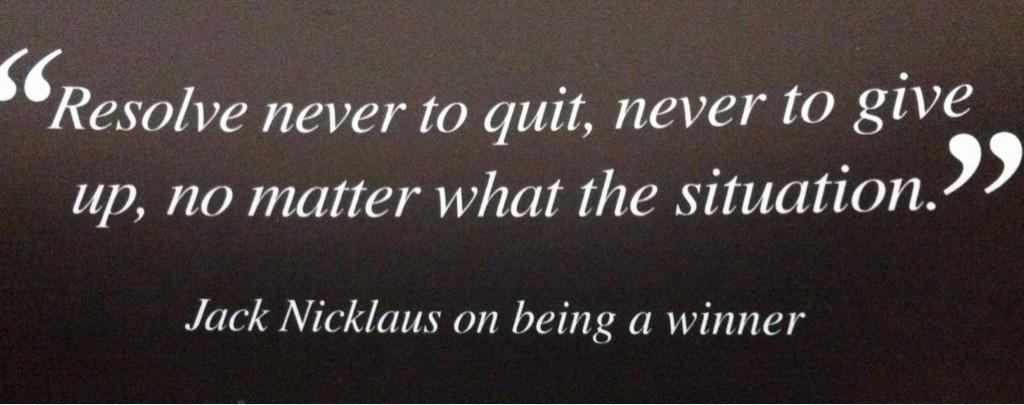Positive Leadership: Choice, Chance, Change
Positive Leadership Limited is a strategic leadership and corporate finance advisory firm. We use our considerable experience to provide unique perspectives and innovative solutions which help corporate leaders unlock maximum value from complex business challenges. There is no dress rehearsal for delivering answers to critical business challenges. When you are under intense pressure to succeed, we help deliver the vitally important marginal gains which let your business excel and win.
The Positive Leadership Blog has been recognised as a Top 50 Leadership Blog by the number of pages indexed by Google and as one of the Top 100 Most Socially Shared Leadership Blogs of 2013.
Positive Leadership has also been recognised as a Top 50 Leadership Expert to Follow on Twitter.
Follow us on Twitter @posleadership
LEADERSHIP IS A PROCESS OF SOCIAL INFLUENCE, WHICH MAXIMISES THE EFFORTS OF OTHERS TOWARDS THE ACHIEVEMENT OF A SHARED GOAL.
Monday, October 22, 2012
Friday, October 19, 2012
Positive Leadership: What Makes @TeamSky Special?
What makes Team Sky special is that they keep riding that line!
And if you don’t know what the line
is...
This is the line,
The line between
winning and losing,
Between failure
and success,
Between good and
great,
Between dreaming
and believing,
Between
convention and innovation,
Between head and
heart,
It’s a fine line,
It challenges
everything we do,
And we ride it
every day.
For more, see: http://www.facebook.com/TeamSky/info
Positive Leadership: What Makes @TeamSky Special?
Thursday, October 18, 2012
Positive Leadership: ‘Rules’ for Being a Champion
Firstly, let us explain what we mean by being a champion. We
do not mean winning a race or a tournament. There is so much more to being a
champion than just winning. Before you can win you already have to be a champion
in how you practice, train, conduct yourself and how you behave. If you do these
things properly (the process) then you'll achieve your goals (the outcome.
You can only control what you do; not what anybody else does.
You can only control what you do; not what anybody else does.
Rule #1: Champions Choose to Work Hard
This is very true for all walks of life and not just in a
sporting context. You only get out of something what you put into it! After
all, 'practice makes permanent'. You can't expect to improve and achieve your
goals/dreams if you don't work hard at it.
Rule #2: Champions Practice Intelligently
Putting lots of hard work into mindless practice sessions
with no feedback is as useful (if not more destructive) than doing no practice.
Length of sessions is crucial, doing shorter practice sessions with total focus
followed by breaks between changing activity is more productive than just going
at it 100% for hour upon hour. Good practice needs continual feedback.
Rule #3: Champions Live in the Present but Have a Clear
Picture of the Future
It is important to stay in the present when it comes to winning.
Not to dwell on the past or dream of the future but to have a clear focus of
what you are doing right now and not let any failures or setbacks affect the
long term goal. To know what you need to do at the current time you must have a
clear picture of what you are trying to achieve and what it will look like when
you have achieved it.
Rule # 4: Champions Always Want to Learn
The most successful people are eager to learn as much as
possible, before deciding what to use and what didn't work for them.
Rule #5: Champions Never Give Up
For a new skill to become automatic it takes quite a great
deal of practice and dedication. If something doesn't work first time doesn't
mean it won't with practice.
Rule #6: Champions "Just Do It"
If not now, when? How many times have you said to yourself,
"I'd love to be able to....." and then done nothing about it? If you
have a goal to achieve go about achieving it! Don't just sit around talking
about doing it, actually go and do it.
Rule #7: Champions Enlist Help
Champions aren't afraid to ask for help (have a coach) to
make them better at something.
Positive Leadership: ‘Rules’ for Being a Champion
Wednesday, October 17, 2012
Positive Leadership: Leave Your Legacy
Stanford University Communications has partnered with three
Stanford Alums to create the institutional messages that will run during 2012 Stanford
Athletics television broadcasts.
The series is based on a film the students
made called "#leaveyourlegacy" that they created to show their
appreciation for the University. Garrett Gunther (MS '12), Kris Cheng (MS '12)
and Dominique Yahyavi (BS '11) combined their skills in story-telling, design,
engineering, and cinematography to create these beautiful images that tell the
story of Stanford students and their dedication to excellence and innovation.
The words are from a speech given by Ray Lewis to the Stanford Men's Basketball
team just before their victorious NIT Championship game on March 29, 2012.
Positive Leadership: Leave Your Legacy

Labels:
Legacy,
Sport and Business,
Video,
Winning
Tuesday, October 16, 2012
Positive Leadership: The Power of Networks
In this RSA Animate, Manuel Lima, senior UX design lead
at Microsoft Bing, explores the power of network visualisation to help navigate
our complex modern world.
Listen to the full talk: http://www.thersa.org/events/audio-and-past-events/2011/the-power-of-networks
Listen to the full talk: http://www.thersa.org/events/audio-and-past-events/2011/the-power-of-networks
Positive Leadership: The Power of Networks
Monday, October 15, 2012
Positive Leadership: Heroic Leadership
After flying to an altitude of 39,045 meters (128,100 feet)
in a helium-filled balloon, Felix Baumgartner yesterday completed a record breaking jump
for the ages from the edge of space, exactly 65 years after Chuck Yeager first
broke the sound barrier flying in an experimental rocket-powered airplane.
Felix reached a maximum of speed of 1,342.8 km/h (833mph) through the near vacuum of the stratosphere before being slowed by the atmosphere later during his 4:20 minute long freefall. The 43-year-old Austrian skydiving expert also broke two other world records (highest freefall, highest manned balloon flight), leaving the one for the longest freefall to project mentor Col. Joe Kittinger.
Felix reached a maximum of speed of 1,342.8 km/h (833mph) through the near vacuum of the stratosphere before being slowed by the atmosphere later during his 4:20 minute long freefall. The 43-year-old Austrian skydiving expert also broke two other world records (highest freefall, highest manned balloon flight), leaving the one for the longest freefall to project mentor Col. Joe Kittinger.
For more on this heroic example of teamwork and excellence under pressure, see:
Positive Leadership: Heroic Leadership
Friday, October 12, 2012
Positive Leadership: The True Essence of a CEO
When you hear of CEOs, you are probably inclined to think of
perks and corner offices. You might also consider the adjectives “greedy,
aloof and egocentric”. While in some cases this is warranted, we wonder about
how much we like to glorify the role of a CEO.
For centuries people have been intrigued by the idea of power.
We see the stereotype portrayed in bestselling books and movies. And countless
studies have certainly supported the belief that people in power are created
equal.
Winston Churchill said: the price of greatness is
responsibility. That is what we believe is the true essence of a CEO – the
responsibility to your employees, customers, community and shareholders. Yes of
course, being a CEO gives you the platform to affect change, to make something
happen that you otherwise did not have the ‘power’ to do before. But it is the
responsibility that is of most value. Nothing is pre-conceived and there is in
fact a long road to earning that responsibility.
Being appointed the CEO by a board of directors or
shareholder does not make you a leader, but leading is a CEO’s primary
responsibility. A CEO is really only empowered and fueled by the confidence
that he has earned the trust of his colleagues.
Trust plays a crucial role in the success of a business. And
Stephen M.R. Covey believed this. He wrote a book called Smart Trust to
highlight how leading companies that have built high-trust relationships with
their employees and customers, consistently outperformed non high-trust
companies up to three times.
The typical stereotype of a CEO will continue to make
headlines. But as the world changes we need to document better examples and
inspire other leaders to take themselves off the pedestals, break down the
barriers and tip the scale in the other direction. Whether CEOs are born or
made has little significance. It is our firm belief that you are measured by the
responsibility, honesty and integrity in which you lead.
Positive Leadership: The True Essence of a CEO

Labels:
Book,
CEO,
Honesty,
Integrity,
Responsibility,
Values of Positive Leadership
Thursday, October 11, 2012
Positive Leadership is Pleased to Support the National Breast Cancer Foundation
Positive Leadership is pleased to support the National Breast Cancer Foundation.
Positive Leadership is Pleased to Support the National Breast Cancer Foundation
Positive Leadership: The Ten Commitments of Leadership
The Ten Commitments of Leadership
Clarify Values – Affirm shared values.
Set the Example – Live the shared values. Teach others to
model the values.
Envision the Future – Imagine the possibilities. Find a
common purpose.
Enlist Others – Appeal to common ideals. Animate the vision.
Search for Opportunities - Seize the initiative. Exercise
outsight.
Experiment and Take Risks - Generate small wins. Learn from
experience.
Foster Collaboration - Create a Climate of Trust. Facilitate
relationships.
Strengthen Others - Enhance self-determination. Develop
competence and confidence.
Recognise Contributions - Expect the best. Personalize
recognition.
Celebrate the Values and Victories - Create a spirit of
community. Be personally involved.
Positive Leadership: The Ten Commitments of Leadership
Wednesday, October 10, 2012
Positive Leadership: Innovating on a Shoestring
Scott Anthony, president of Innosight, explains how to
innovate when time and money are tight.
Positive Leadership: Innovating on a Shoestring
Tuesday, October 09, 2012
Positive Leadership: How Winners Achieve Success
How winners 'ACHIEVE' success:
A - acceptance; the ability to accept that you do not always succeed the first time and you must keep on trying until you do succeed.
C - criticism; the ability to receive negative feedback and
use it positively to affect your performance.
H - help; use a good coach to work towards your goals - it
is not a sign of weakness or lack of ability to use a coach.
I - inspiration; be inspired by other people. If someone who
you often beat wins against you take inspiration that it means you are good
enough to do the same.
E - evaluate; honestly take stock of where you are with your skills and then work on the aspects that need to be improved.
V - vivid; have a clear image of what you want to achieve,
how you are going to achieve it and who you need to help you to do so.
E - equal; all people have the ability to do great things.
Our future is not pre-determined for us. Genetics plays a role but hard work
plays an even bigger role.
Positive Leadership: How Winners Achieve Success

Labels:
Hard Work,
Inspiration,
Success,
Winning
Monday, October 08, 2012
Positive Leadership: 12 Signs That Someone Is Not A Good Leader
12 Signs That Someone Is Not A Good Leader:
1. They are not willing to fail.
2. They only talk and never listen.
3. They don’t develop and produce other leaders.
4. They micro-manage.
5. They are generally insecure or threatened by those they
lead.
6. They are not willing to follow and learn from their
subordinates.
7. They are more focused on what people think about the
results, than the results themselves.
8. They don’t have a genuine care and concern for those they
lead.
9. They put policy over people, no matter the situation or
circumstance.
10. They are willing to make the wrong decision, for fear of
fall-out from making the right decision.
11. They take all of the credit and none of the blame.
12. They only dream about being like others rather than
dreaming about becoming who they are capable of becoming.
Positive Leadership: 12 Signs That Someone Is Not A Good Leader
Friday, October 05, 2012
Positive Leadership: The Wise Leader
Hirotaka Takeuchi and Ikujiro Nonaka, authors of the HBR
article "The Wise Leader," explain how the best executives strive for
the common good.
Positive Leadership: The Wise Leader
Thursday, October 04, 2012
Positive Leadership: Stress Can Be Positive!
Firdaus Dhabhar is a Professor of Psychiatry who researches
the mind-body connection at the Immunology Institute and the Cancer Institute
at Stanford University. He studies the positive aspects of stress on the body.
Positive Leadership: Stress Can Be Positive!
Wednesday, October 03, 2012
Positive Leadership: Behaviours Loyal Employees Trust
Here are 5 behaviours for leaders to adopt when struggling
to keep employees happy and loyal:
1) Tell the truth.
Not everyone is a star. Pick out those with leadership or other valued talent
potential and nurture them. This will come back to the business as these
individuals, in turn, nurture other workers.
2) Communicate roles
and responsibilities. Provide a path to success not only for those with
leadership promise but for all employees. Sometimes this will mean difficult
changes, but remember the most important skill of a leader: never surprise an
employee with bad news. Have a development plan for all, and a get-well plan
for those whose performance lags. Make sure everyone knows the plan.
3) Create a workplace
culture that values real people relationships. For many employees,
workgroup relationships and relationships between managers and workers drive
engagement and loyalty more effectively than wearing the corporate branded
shirt.
4) Be fair and open.
This does not mean treat everyone equally – it means have transparent processes
for managing and leading. Employees are more likely to respond positively to
change when the process used to manage change is fair.
5) Model the behaviours
you seek. Accept your responsibility as a leader and act with engagement,
commitment and responsibility. Do this every day.
Each of us possesses skills, strengths, talents and flaws.
Each of us seeks to belong, to be engaged, to relate to those around us.
Loyalty is built on relationships, shared understanding and trust. Engagement
and commitment require loyalty, shared goals and fair treatment. Don’t take
loyalty and engagement for granted – create a remarkable culture where there
are possible and rewarding outcomes of the workplace.
We are only human after all – Every one of us. Every leader.
Every brand. Every workplace. Every person.
Positive Leadership: Behaviours Loyal Employees Trust
Tuesday, October 02, 2012
Monday, October 01, 2012
Positive Leadership: When is the Most Important Part of a Coaching Lesson?
A question for coaches and teachers: What’s the single most
important moment of a lesson?
Is it:
(A) the initial explanation of the skill being taught?
(B) the first couple of tries?
(C) the moment things click, when the learner “gets it”?
We think the answer is (D) — None of the Above.
There’s a strong case to be made that the single most
important moment of learning happens before the lesson actually begins.
We know that master coaches are extremely skilled at quickly
making a strong emotional connection with a learner, to create the bond of
trust that’s the foundation of all learning.
But mere emotional connection isn’t enough. The world is
filled with extremely charismatic, fantastically entertaining teachers who are
wonderful at creating connection but not so great at actually improving skill.
Because it’s not enough just to capture the learner’s attention — you have to create intention: an urgent desire to work hard toward a concrete goal, toward some vision of their future self.
Science is giving us a peek inside that process. A group of
researchers at Case Western were able to look at the brains of learners in two
conditions. In the first, the coach was judgmental, and focused on negatives
and the past. In the second, the coach was empathetic, and focused on the
future.
With the judgmental coach, the visual cortex showed limited
activity. With the positive, future-oriented coach, however, it lit up like a
Christmas tree. The researchers concluded that this correlated with someone imagining
their future.
The takeaway: when it
comes to learning, brains work exactly like flashlights. It’s not enough just
to turn them on; they have to be pointed toward a target.
A few simple ways to do this:
Encourage expression
about future goals. Where do they want to be a month from now? A year? Five
years?
Ruthlessly eliminate
negative statements — especially judgements — that cause brains to shut
down.
Count down until some
Big Future Event. How many practices do we have left until the tournament?
How many more lessons until the recital?
A calendar with Xs is a powerful tool.
Positive Leadership: When is the Most Important Part of a Coaching Lesson?
Sunday, September 30, 2012
Positive Leadership: Winning the Ryder Cup
If this Ryder Cup is to be saved by Europe then each of the team has to take inspiration from Ian Poulter and find the champion within themselves.
It's simply a matter of pride and, of course, passion.
There are few lonelier places in sport than the final day
singles of a Ryder Cup. Nowhere to hide, no-one to hide behind. These men are on their own.
Still a team but on their own. While stroke play
might be the better test of golf, match play is by far the better test of
character.
Twelve points to be won by twelve great golfers. It can be done! Good luck Team Europe!
Positive Leadership: Winning the Ryder Cup
Friday, September 28, 2012
Positive Leadership: The Challenges of Goal Setting
When you set goals do you struggle to find the right balance
between being too tough or too easy?
Here are the “seven deadly sins” of goal-setting, all motivated by the desire
to avoid uncomfortable confrontations.
As you read the descriptions of these
“sins”, ask yourself if you recognise any of them in your own dealings with
subordinates (or interactions with your boss):
Backing away from tough expectations: You spend more time
negotiating the goal downward than in figuring out how to achieve it.
Engaging in charades: You and your people know from the
beginning that the goal is just an exercise to convey the appearance of
progress, but there’s no hope of achieving it.
Accepting seesaw trades: When your people take on one goal,
they are relieved of another one.
Setting vague or distant goals: The time frame is not
explicitly defined or set too far into the future, so no one takes it
seriously.
Not establishing consequences: You don’t really differentiate
between those who successfully achieve goals and those who do not.
Setting too many goals: By assigning an overabundance of
objectives you allow subordinates to pick and choose the goals that they either
want to do or find easiest to do — but not necessarily the ones that are most
important.
Allowing deflection to preparations, studies, and research:
You allow people to spend time planning instead of committing to a real goal.
Setting specific goals in a clear and compelling way — and insisting that
people work together to achieve them — is the best way to get results.
Are you putting the right kinds of demands on your people,
or are you committing some of the deadly sins?
Positive Leadership: The Challenges of Goal Setting
Thursday, September 27, 2012
Positive Leadership: Assessing Team Performance and Potential
The performance and potential matrix (9 box model) is one of
the most widely used tools in succession planning and development. It can be a
valuable tool for anyone who works in talent management, or for any manager.
The performance and potential matrix, commonly referred to
as “the nine box”, is a simple yet effective tool used to assess talent in
organisations. It assesses individuals on two dimensions – their past
performance and their future potential.
The X axis (horizontal line) of 3 boxes assesses leadership
performance and the Y axis of 3 boxes (vertical line) assesses leadership
potential. A combination of Y and X axis makes up the box within the grid that
the leader is placed. 1A - High Performance/High Potential, 3C - Low
Performance/Low Potential, etc...
The tool is best if used by a team and facilitated by
someone who has experience with the process.
For more, see: http://www.linkageinc.com/thinking/linkageleader/Documents/Jon_Warner_Using_a_Performance_and_Potential_Grid_to_Guide_Coaching_Interventions.pdf
Positive Leadership: Assessing Team Performance and Potential

Labels:
Leadership Development,
Teamwork
Wednesday, September 26, 2012
Positive Leadership: Top-Ranked Leadership Companies Perform Better
Key takeaways from
- The best companies for leaders generate dramatically greater market value over time than the weakest companies for leadership development.
- Leading public company CEOs commit a higher priority to leadership development in spite of the added burden of more complex and “distracting” environments with added pressures for short-term financial results.
- Smaller and private company CEOs spend more of their personal time (25 percent versus 15 percent) on both developing others as well as developing themselves, but are less likely to install systematic processes for leadership development.
For more, see: http://chiefexecutive.net/40-best-companies-for-leaders-2012-how-top-companies-excel-in-leadership-development
Top-Ranked Leadership Companies Perform Better
Summary 10-year performance comparisons*
| Chief Executive/Chally Worldwide Best Companies for Leaders Survey Ranking | Average % Market Capitalization Growth |
|---|---|
| Top 15% of Resopnding Companies | +22% |
| Bottom 15% of Resopnding Companies | -23% |
*Includes companies where public data is available for 2001 through 2011. Reasons for unavailable data include merger, acquisition or start-up within the period. A full survey report is available at www.chally.com.
Positive Leadership: Top-Ranked Leadership Companies Perform Better

Labels:
High Performing Organisations,
Research
Subscribe to:
Posts (Atom)


























